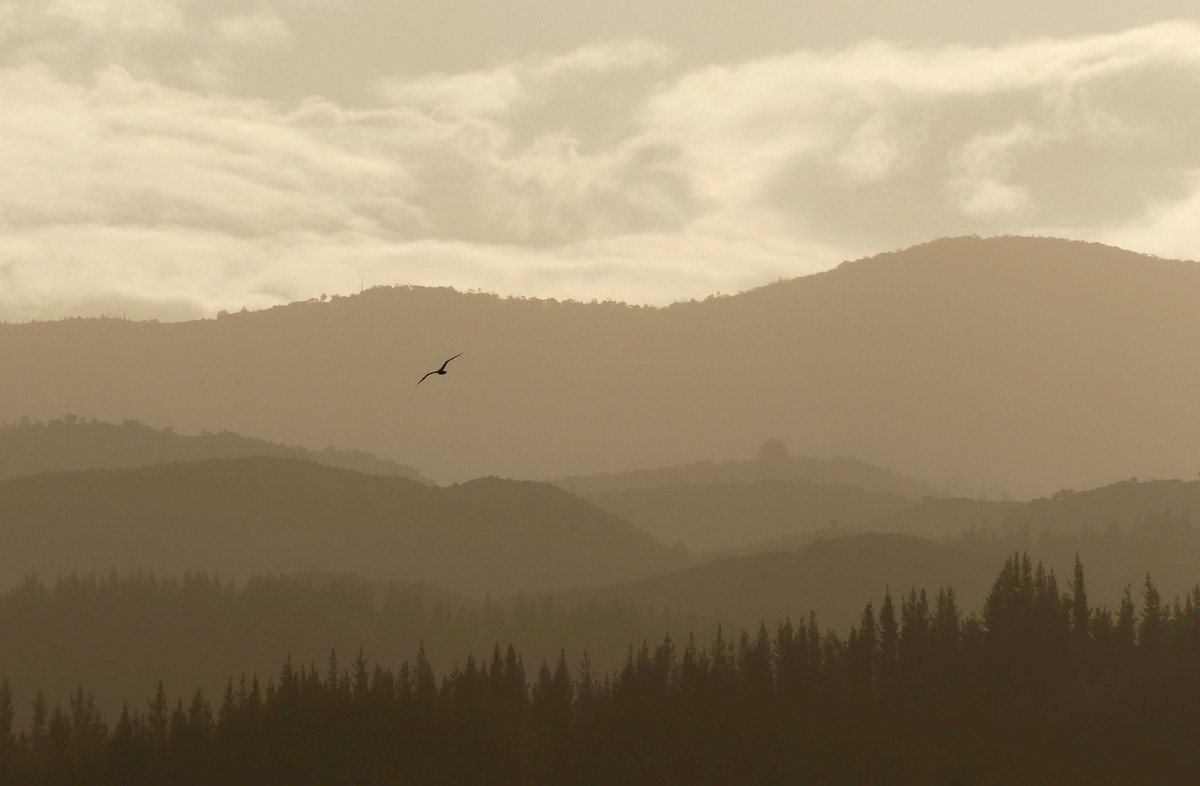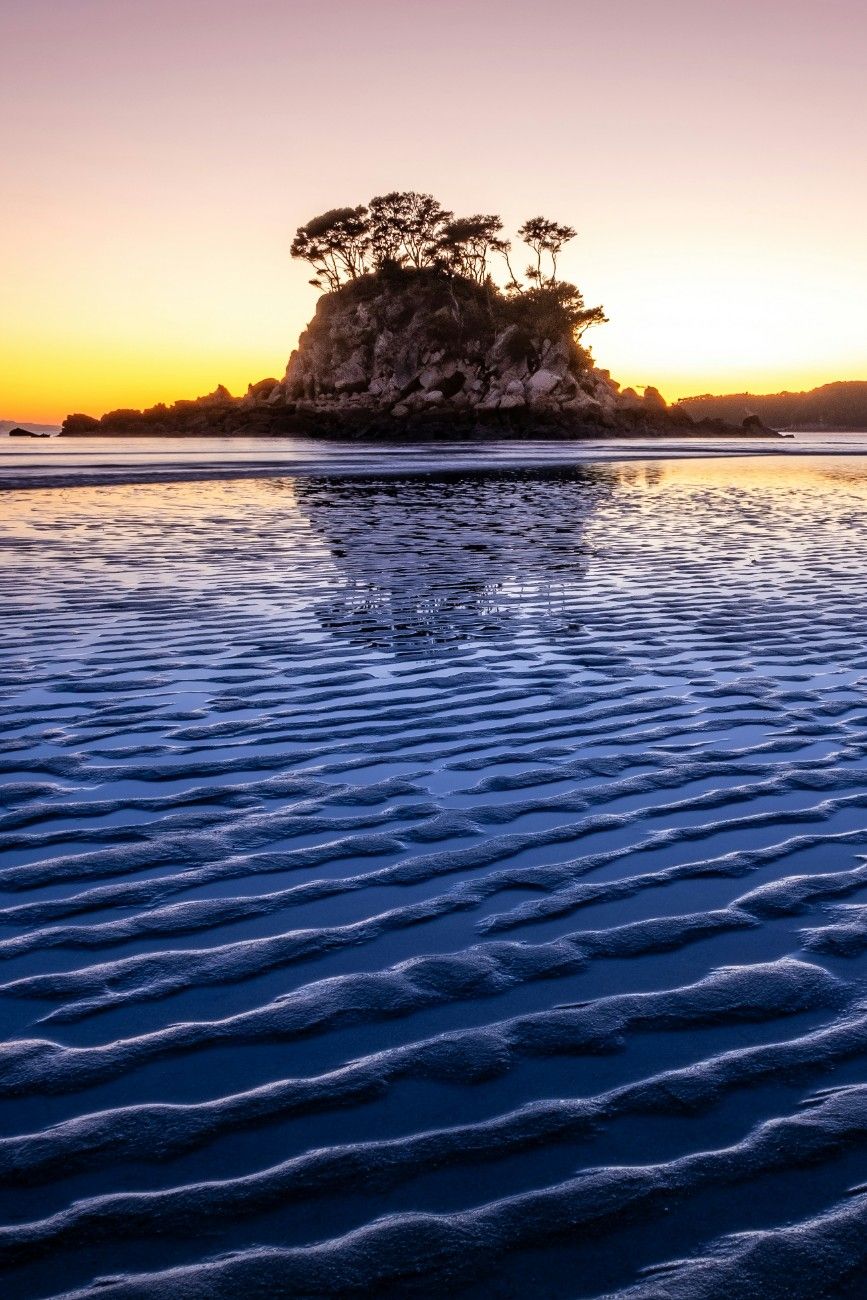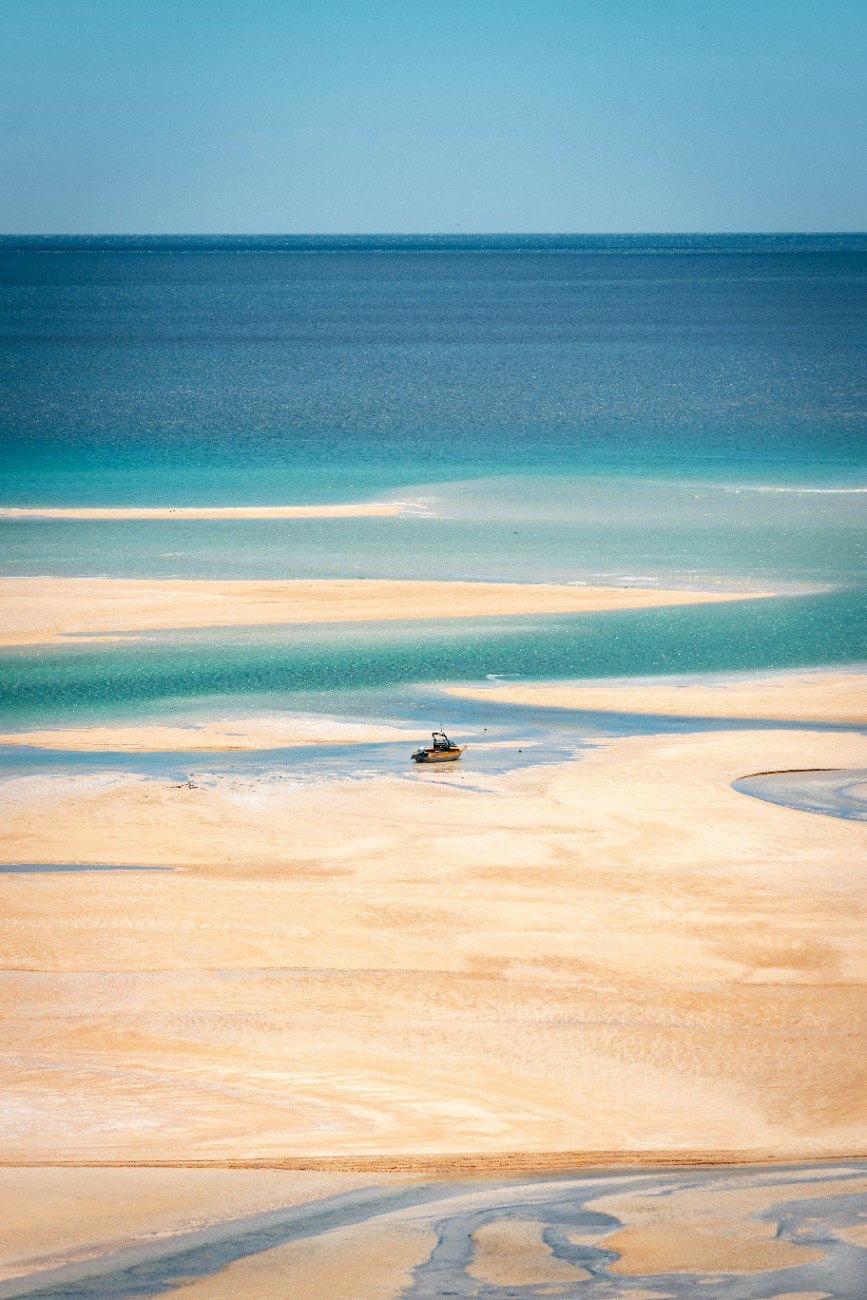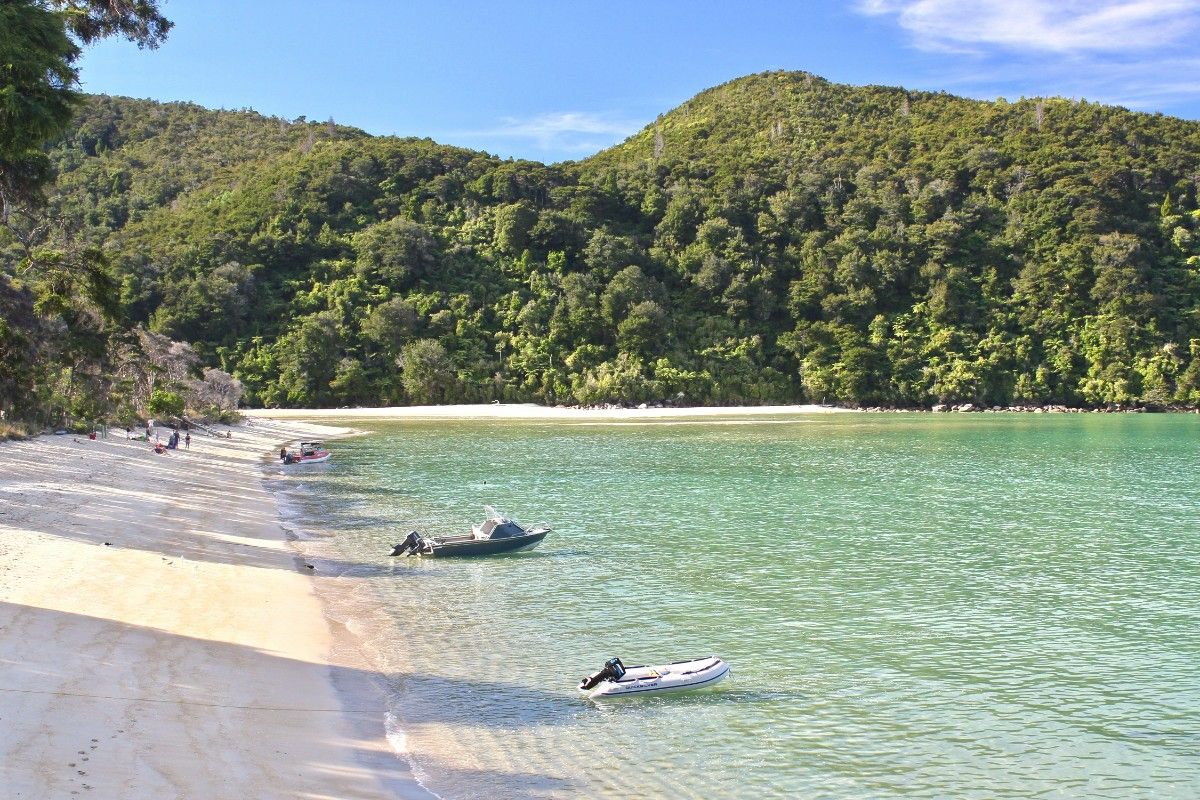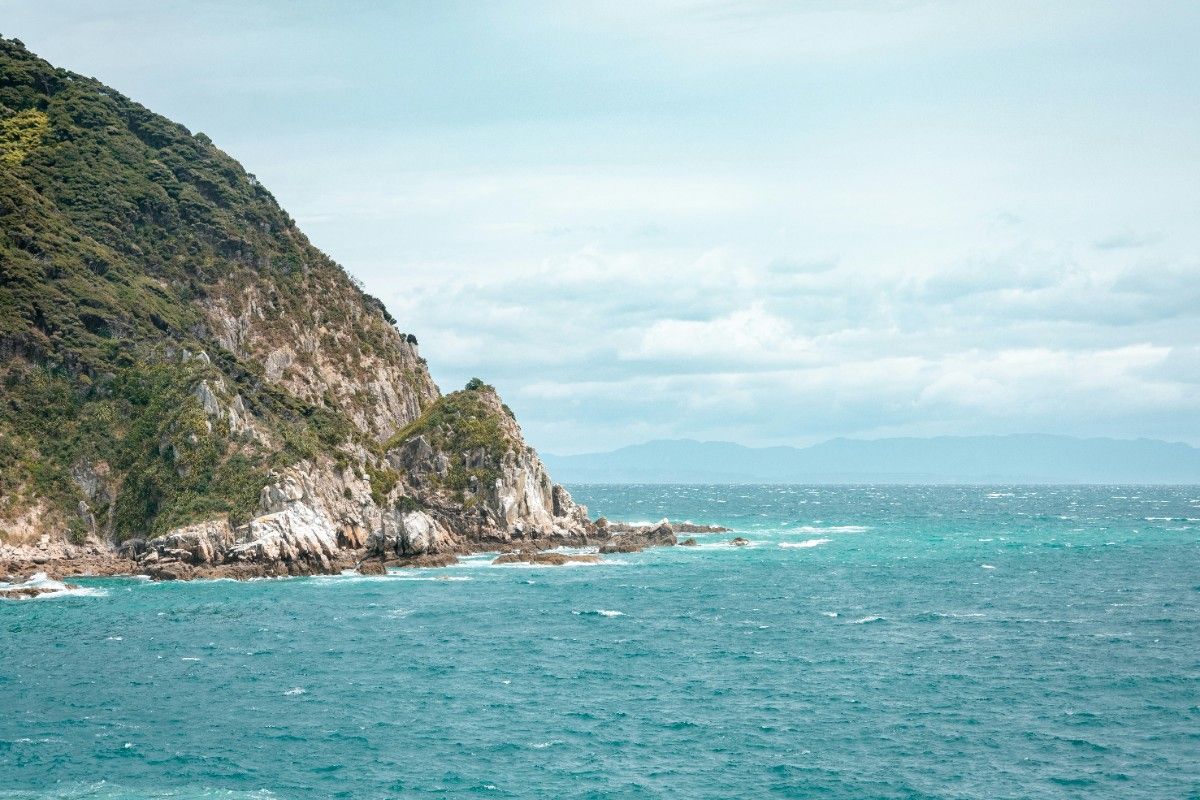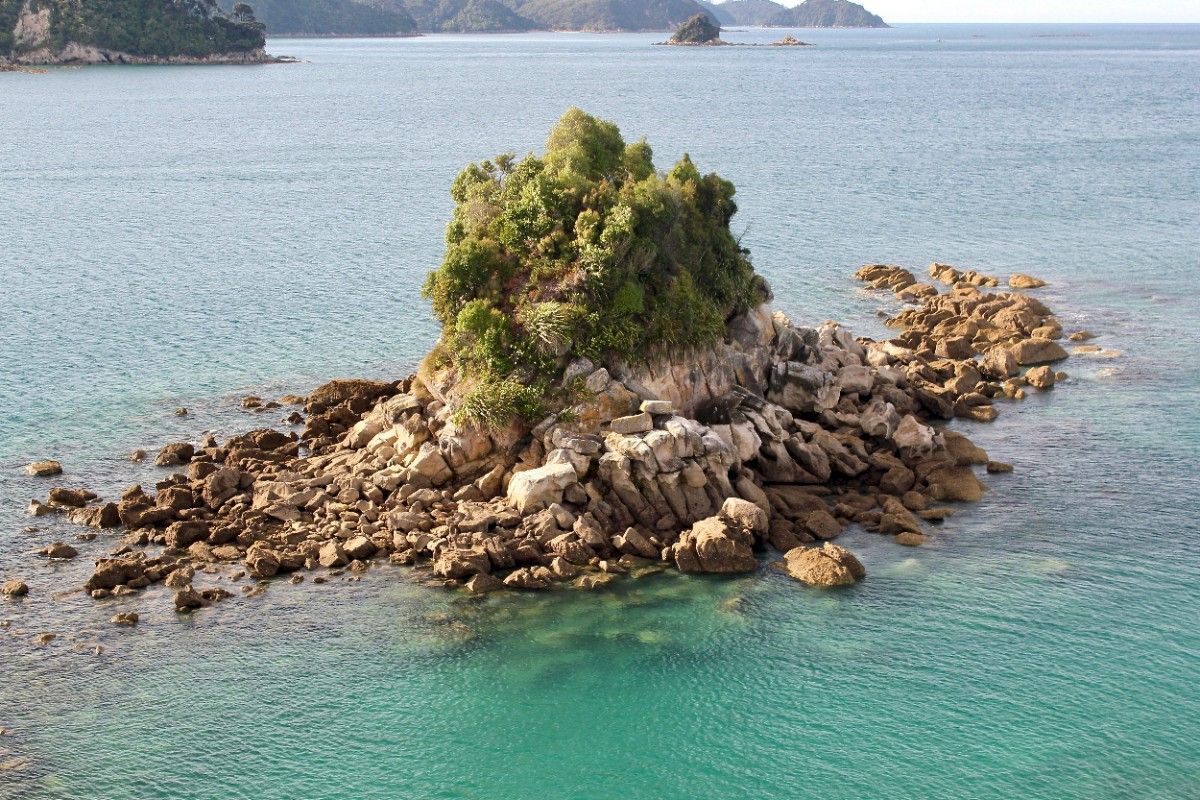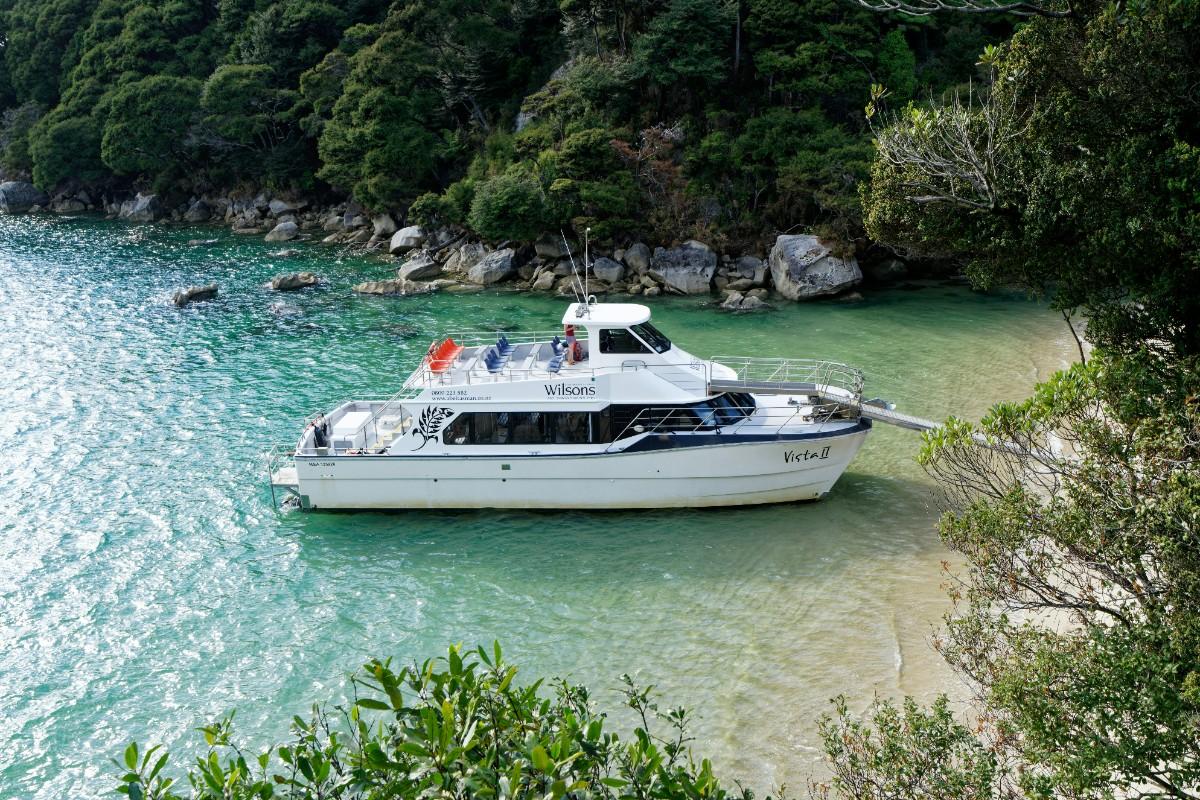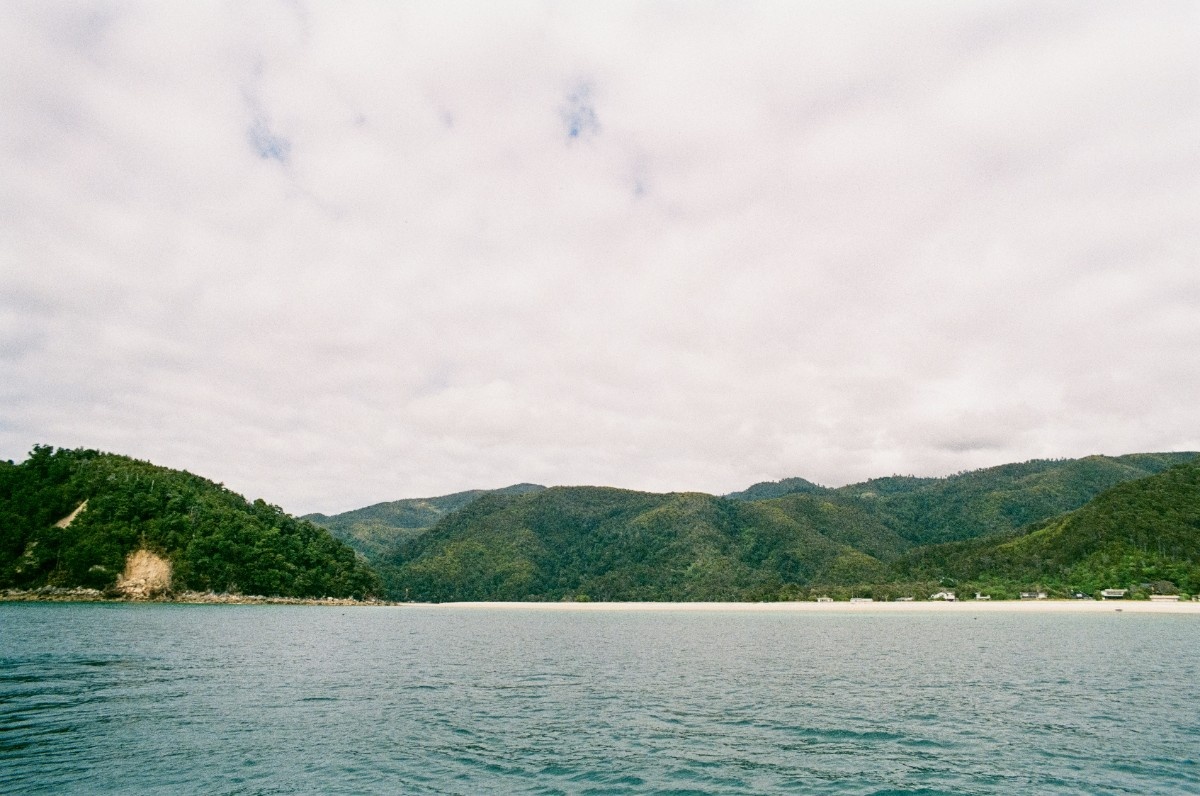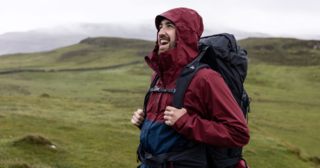Introduction to Abel Tasman National Park
Overview of Abel Tasman National Park
Abel Tasman National Park, located on the northern coast of New Zealand's South Island, is a stunning coastal paradise that attracts visitors from around the world. Named after the Dutch explorer who first laid eyes on New Zealand in 1642, this national park is renowned for its golden sandy beaches, crystal-clear turquoise waters, and lush native forest. Despite being New Zealand's smallest national park, covering an area of approximately 22,530 hectares, Abel Tasman National Park offers a diverse range of landscapes and activities that make it a must-visit destination for nature lovers and outdoor enthusiasts alike.
The park's main attraction is its pristine coastline, which stretches for about 60 kilometres from Marahau in the south to Wainui in the north. Along this coastline, visitors can find numerous secluded bays, hidden coves, and picturesque beaches, each with its own unique charm and character. Some of the most popular beaches in the park include Kaiteriteri, Anchorage, and Onetahuti, which offer excellent swimming, snorkelling, and kayaking opportunities.
In addition to its stunning coastal scenery, Abel Tasman National Park is also home to a diverse array of native flora and fauna. The park's lush forest is dominated by species such as beech, kanuka, and rata, which provide habitat for a wide range of birds, including the rare South Island saddleback, the melodious bellbird, and the playful weka. The park's waters are also teeming with life, with fur seals, little blue penguins, and bottlenose dolphins frequently spotted along the coast.
History and Cultural Significance
Abel Tasman National Park has a rich history and cultural significance that dates back centuries. The area was originally inhabited by the Māori people, who named it "Te Tai-o-Aorere" or "The Tides of Aorere." The Māori people lived in harmony with the land and sea, using the park's resources for food, shelter, and transportation.
In 1642, Dutch explorer Abel Tasman became the first European to lay eyes on New Zealand, anchoring his ship in what is now known as Golden Bay. However, it wasn't until the late 19th and early 20th centuries that European settlers began to arrive in the area, attracted by the park's natural resources and stunning scenery.
In 1942, 300 years after Abel Tasman's first visit, the New Zealand government established Abel Tasman National Park to protect the area's unique natural and cultural heritage. Today, the park is managed by the Department of Conservation, which works to preserve the park's ecosystems and historic sites while also providing opportunities for visitors to enjoy and learn about this special place.
One of the most significant cultural sites in Abel Tasman National Park is Te Pukatea Bay, which was once home to a large Māori settlement. Visitors can take a guided tour of the bay to learn about the Māori people's connection to the land and sea, and to see the remains of ancient Māori gardens and other historic sites.
Accommodation Options in and Around Abel Tasman National Park
Camping in Abel Tasman National Park
For those who love the great outdoors, camping in Abel Tasman National Park is an experience not to be missed. The park offers a range of camping options, from basic backcountry sites to more developed campgrounds with amenities like toilets and cooking facilities.
One of the most popular camping areas in the park is Totaranui, located near the northern end of the park. Totaranui is a large campground with over 300 sites, including both powered and non-powered options. The campground is set in a beautiful location, with direct access to the golden sands of Totaranui Beach and sweeping views of the Tasman Bay. Facilities at Totaranui include toilets, showers, a shop, and a BBQ area, making it a great option for families or those who prefer a bit more comfort.
For those who want a more immersive wilderness experience, the park also offers a range of backcountry campsites. These sites are located along the coastal track and can only be accessed by foot or water taxi. They typically have basic facilities like toilets and water sources but no other amenities.
One of the most popular backcountry campsites in Abel Tasman National Park is Anchorage. Located about halfway along the coastal track, Anchorage is a large campsite with stunning views over the bay. The campsite has toilets and a water source, but no other facilities, so campers need to be fully self-sufficient. Anchorage is a great base for exploring the surrounding area, with several walking tracks and kayaking opportunities nearby.
Lodges and Resorts in Abel Tasman National Park
For those who prefer a more luxurious experience, Abel Tasman National Park also offers a range of lodges and resorts. These accommodations provide a comfortable and convenient base from which to explore the park, with amenities like restaurants, bars, and guided activities.
One of the most popular lodges in the park is the Awaroa Lodge, located in the heart of the park and accessible only by foot, kayak, or water taxi. The lodge offers a range of accommodation options, from simple rooms to more luxurious suites, all with stunning views of the surrounding wilderness. The lodge also has a restaurant and bar, as well as a range of guided activities like kayaking, hiking, and birdwatching.
Another popular option is the Torrent Bay Lodge, located on the edge of the park and accessible by water taxi or kayak. The lodge offers a range of accommodation options, from simple cabins to more luxurious suites, all with stunning views of the bay and surrounding forest. The lodge also has a restaurant and bar, as well as a range of guided activities like kayaking, hiking, and fishing.
Accommodation Options Outside the Park
For those who prefer to stay outside the park, there are plenty of accommodation options in the nearby towns of Marahau, Kaiteriteri, and Motueka. These towns offer a range of hotels, motels, holiday parks, and backpacker hostels, catering to a variety of budgets and preferences.
Marahau is the gateway to Abel Tasman National Park and is located just a few kilometres from the park entrance. The town has a range of accommodation options, from basic camping grounds to more luxurious lodges and apartments. Marahau is also home to several cafes, restaurants, and shops, making it a convenient base for exploring the park.
Kaiteriteri is another popular gateway to Abel Tasman National Park, located just a short drive from Marahau. The town is known for its stunning beach, which is a popular spot for swimming, kayaking, and sunbathing. Kaiteriteri also has a range of accommodation options, from basic camping grounds to more luxurious lodges and apartments.
Motueka is a larger town located about 20 kilometres from the park entrance. The town has a wider range of accommodation options, from budget backpacker hostels to more upscale hotels and motels. Motueka is also home to several supermarkets, cafes, and restaurants, making it a good option for those who want to self-cater or explore the wider region.
Getting Around Abel Tasman National Park: Water Taxis and Other Options
Water Taxis: A Unique Way to Explore the Park
One of the most popular and convenient ways to explore Abel Tasman National Park is by water taxi. These small, nimble boats offer a unique perspective of the park's stunning coastline and provide access to remote beaches and hidden coves that are otherwise difficult to reach.
Several companies operate water taxi services within the park, including Abel Tasman Sea Shuttle and Abel Tasman Aqua Taxi. These operators offer a variety of scheduled trips and charter services, allowing visitors to customise their experience based on their interests and time constraints.
One of the most popular water taxi routes is the scenic cruise from Kaiteriteri to Totaranui, which takes visitors along the park's stunning coastline and offers the opportunity to spot wildlife such as fur seals, dolphins, and little blue penguins. Along the way, the water taxi stops at several beautiful beaches, including Anchorage, Bark Bay, and Onetahuti, where visitors can disembark and explore on foot.
Water taxis are also a convenient option for those who want to hike the Abel Tasman Coast Track but don't want to carry a heavy backpack or complete the entire 60-kilometre route. By using a water taxi, hikers can choose to walk specific sections of the track and then catch a ride back to their starting point or on to their next destination.
In addition to scheduled trips, many water taxi operators also offer charter services, allowing visitors to create their own itinerary and explore the park at their own pace. This can be a great option for families, groups of friends, or those who want a more personalised experience.
Kayaking and Canoeing
For those who want a more active and immersive experience, kayaking and canoeing are excellent ways to explore Abel Tasman National Park's stunning coastline and hidden coves. With its calm, clear waters and abundant marine life, the park is a paradise for paddlers of all skill levels.
Several companies offer guided kayak tours and rentals within the park, including Abel Tasman Kayaks and Kaiteriteri Kayaks. These operators provide all the necessary equipment and instruction, making it easy for even novice paddlers to enjoy the park's stunning scenery and wildlife.
One of the most popular kayaking routes is the full-day trip from Marahau to Anchorage, which takes paddlers along the park's stunning coastline and offers the opportunity to explore hidden caves, secluded beaches, and crystal-clear lagoons. Along the way, paddlers may spot fur seals, dolphins, and a variety of sea birds, including the rare blue penguin.
For those who want a more immersive experience, multi-day kayaking trips are also available. These trips allow paddlers to explore the park's more remote areas and camp on secluded beaches, offering a unique and unforgettable way to experience the beauty of Abel Tasman National Park.
Hiking and Walking
Of course, one of the best ways to explore Abel Tasman National Park is on foot. The park is home to a variety of walking and hiking trails, ranging from short, easy strolls to more strenuous multi-day treks.
The most famous of these is the Abel Tasman Coast Track, a 60-kilometre trail that takes hikers along the park's stunning coastline and through its lush native forest. The track can be completed in three to five days, depending on the hiker's pace and the number of side trips taken along the way.
For those who want a less strenuous option, there are plenty of shorter walks and day hikes available within the park. One of the most popular of these is the Bark Bay Falls Track, a 2.3-kilometre trail that takes hikers through native forest to a stunning waterfall and swimming hole.
Other popular day hikes include the Cleopatra's Pool Track, which leads to a series of crystal-clear rock pools, and the Separation Point Track, which offers stunning views of the park's rugged coastline and the surrounding islands.
Regardless of which hiking or walking trail you choose, be sure to wear sturdy shoes and bring plenty of water and snacks. And remember to always stay on the marked trails and respect the park's natural environment by following the principles of Leave No Trace.
The Wonders of Abel Tasman National Park's Beaches
Kaiteriteri Beach: The Gateway to the Park
Kaiteriteri Beach is often referred to as the gateway to Abel Tasman National Park, and for good reason. This stunning stretch of golden sand is located just outside the park's southern boundary and is the starting point for many of the park's water taxi and kayaking tours.
But Kaiteriteri Beach is much more than just a jumping-off point for exploring the park. With its crystal-clear water, gentle waves, and stunning views of the surrounding mountains and islands, it's a destination in its own right.
The beach is popular with swimmers, sunbathers, and families, thanks to its safe, shallow waters and ample amenities, which include public toilets, showers, and a children's playground. There's also a beachfront café and a handful of shops and tour operators, making it easy to spend a full day or more at Kaiteriteri Beach.
For those who want to explore beyond the beach, there are several walking trails that lead from Kaiteriteri Beach into the surrounding hills and forest. One of the most popular of these is the Kaka Point Track, a 2.5-kilometre trail that offers stunning views of the coastline and the park's interior.
Anchorage Beach: A Hiker's Paradise
Anchorage Beach is one of the most popular destinations within Abel Tasman National Park, thanks to its stunning scenery, excellent swimming and snorkelling opportunities, and easy access via the Abel Tasman Coast Track.
Located about halfway along the park's coastline, Anchorage Beach is a wide, sandy bay flanked by lush native forest and dramatic granite cliffs. The water here is crystal clear and calm, making it a popular spot for swimming, kayaking, and stand-up paddleboarding.
But Anchorage Beach is perhaps best known as a stopover point for hikers on the Abel Tasman Coast Track. The beach is home to a large DOC campsite, which offers basic amenities such as toilets and water, as well as a sheltered cooking area and picnic tables.
From Anchorage Beach, hikers can access a variety of walking trails that lead into the park's interior, including the Pitt Head Loop Track, which offers stunning views of the surrounding coastline and islands, and the Cleopatra's Pool Track, which leads to a series of crystal-clear rock pools that are perfect for a refreshing swim.
Onetahuti Beach: A Secluded Paradise
For those who want to escape the crowds and experience the park's more secluded beaches, Onetahuti Beach is a must-visit destination. Located near the northern end of the park, this stunning stretch of golden sand can only be accessed by foot or water taxi, making it one of the park's more remote and peaceful spots.
Onetahuti Beach is flanked by towering granite cliffs and lush native forest, offering a stunning backdrop for swimming, sunbathing, and picnicking. The water here is crystal clear and calm, making it a popular spot for snorkelling and exploring the park's vibrant marine life.
For those who want to spend the night at Onetahuti Beach, there is a small DOC campsite located just behind the beach, which offers basic amenities such as toilets and water. The campsite is a popular stopover point for hikers on the Abel Tasman Coast Track, but it's also a great option for those who want to escape the crowds and experience the park's more remote and peaceful areas.
From Onetahuti Beach, visitors can access a variety of walking trails that lead into the park's interior, including the Tonga Quarry Track, which offers stunning views of the coastline and the opportunity to explore the remains of an old granite quarry, and the Gibbs Hill Track, which leads to a panoramic viewpoint overlooking the park and the surrounding islands.
Camping in Abel Tasman National Park
Totaranui Campground: A Beachfront Paradise
Totaranui Campground is one of the most popular camping destinations within Abel Tasman National Park, and for good reason. Located at the northern end of the park, this large campground offers stunning beachfront views, easy access to walking and hiking trails, and a range of amenities that make it a comfortable and convenient base for exploring the park.
The campground is situated on a wide, sandy beach that stretches for over a kilometre, offering plenty of space for swimming, sunbathing, and playing in the sand. The beach is flanked by lush native forest and stunning granite cliffs, providing a picturesque backdrop for your camping adventure.
Totaranui Campground offers a range of camping options, including powered and non-powered sites for tents, campervans, and caravans. The campground also has a limited number of basic cabins available for rent, which offer a bit more comfort and privacy than camping.
Amenities at Totaranui Campground include flush toilets, cold showers, drinking water, and a well-equipped cooking shelter with gas cooktops and sinks. There is also a small shop on-site that sells basic groceries, ice, and camping supplies, as well as a phone and Wi-Fi hotspot for staying connected.
From Totaranui Campground, campers can access a variety of walking and hiking trails that lead into the park's interior, including the Awaroa Track, which offers stunning views of the coastline and the opportunity to explore the park's lush native forest. The campground is also a popular starting point for kayaking and boat tours of the park's stunning coastline and islands.
Bark Bay Campsite: A Hiker's Haven
Bark Bay Campsite is a popular stopover point for hikers on the Abel Tasman Coast Track, but it's also a great destination for those who want to escape the crowds and experience the park's more remote and peaceful areas.
Located about halfway along the park's coastline, Bark Bay Campsite is situated in a sheltered, sandy cove surrounded by lush native forest and dramatic granite cliffs. The campsite is only accessible by foot or boat, making it a perfect destination for those who want to immerse themselves in the park's stunning natural beauty.
The campsite offers basic amenities such as toilets and water, as well as a sheltered cooking area and picnic tables. There are also a limited number of tent sites available, which are allocated on a first-come, first-served basis.
From Bark Bay Campsite, hikers can access a variety of walking trails that lead into the park's interior, including the Falls River Track, which leads to a stunning waterfall and swimming hole, and the Bark Bay Track, which offers stunning views of the coastline and the opportunity to explore the park's lush native forest.
For those who want to explore the park's stunning coastline by water, Bark Bay Campsite is also a popular starting point for kayaking and boat tours. The sheltered waters of Bark Bay are perfect for beginners and experienced paddlers alike, and offer the opportunity to explore hidden coves, secluded beaches, and vibrant marine life.
Other Camping Options in Abel Tasman National Park
In addition to Totaranui Campground and Bark Bay Campsite, Abel Tasman National Park offers a range of other camping options for those who want to experience the park's stunning natural beauty up close.
For those who want a more remote and secluded camping experience, there are several basic campsites located along the Abel Tasman Coast Track, including Onetahuti Bay, Tonga Quarry, and Mosquito Bay. These campsites offer basic amenities such as toilets and water, but no other facilities, making them perfect for those who want to escape the crowds and immerse themselves in the park's stunning natural beauty.
For those who prefer a bit more comfort and convenience, there are also several private campgrounds located just outside the park's boundaries, including Kaiteriteri Beach Motor Camp and Old MacDonalds Farm Holiday Park. These campgrounds offer a range of amenities such as powered sites, hot showers, and laundry facilities, as well as easy access to the park's stunning beaches and walking trails.
Regardless of which camping option you choose, it's important to remember to practice Leave No Trace principles and respect the park's natural environment. This means packing out all of your trash, using designated toilet facilities or packing out your waste, and minimising your impact on the park's delicate ecosystems.
Weather in Abel Tasman National Park
Summer in Abel Tasman National Park (December to February)
Summer is the most popular time to visit Abel Tasman National Park, and for good reason. With warm temperatures, long days, and plenty of sunshine, summer is the perfect time to explore the park's stunning beaches, lush forests, and crystal-clear waters.
During the summer months, temperatures in the park typically range from the mid-20s to low 30s Celsius (mid-70s to mid-80s Fahrenheit), with occasional heatwaves that can push temperatures into the high 30s or even low 40s. While these temperatures can be hot, the park's coastal location means that there is usually a refreshing sea breeze to keep things comfortable.
Summer is also the driest time of year in Abel Tasman National Park, with an average of only 7-10 rainy days per month. This means that visitors can expect plenty of sunshine and clear skies, making it the perfect time for swimming, kayaking, and exploring the park's stunning beaches and walking trails.
However, it's important to remember that summer is also the busiest time of year in the park, with thousands of visitors flocking to the region to enjoy the warm weather and stunning scenery. This means that accommodations and activities can book up quickly, so it's important to plan ahead and make reservations well in advance.
Winter in Abel Tasman National Park (June to August)
While winter is the coolest and wettest time of year in Abel Tasman National Park, it can still be a great time to visit for those who don't mind a bit of rain and cooler temperatures.
During the winter months, temperatures in the park typically range from the mid-single digits to low teens Celsius (mid-30s to mid-50s Fahrenheit), with occasional cold snaps that can push temperatures down to near freezing. While these temperatures can be chilly, the park's coastal location means that it rarely experiences snow or extreme cold.
Winter is also the wettest time of year in Abel Tasman National Park, with an average of 12-15 rainy days per month. This means that visitors should come prepared with warm, waterproof clothing and sturdy footwear, as well as a sense of adventure and a willingness to embrace the elements.
Despite the cooler temperatures and wetter weather, winter can be a great time to visit Abel Tasman National Park for those who want to escape the crowds and experience the park's stunning natural beauty in a more intimate and peaceful setting. The park's lush native forests are particularly beautiful in winter, with the rain bringing out the vibrant greens and rich earthy scents of the bush.
Winter is also a great time for wildlife spotting in the park, with many of the park's resident bird species, such as the rare South Island saddleback and the melodious bellbird, being more active and vocal during the cooler months. Visitors may also have the chance to spot fur seals and dolphins playing in the park's coastal waters.
Shoulder Seasons in Abel Tasman National Park (March to May and September to November)
For those who want to avoid the crowds and high prices of peak season, while still enjoying relatively mild weather and plenty of sunshine, the shoulder seasons of spring (September to November) and autumn (March to May) can be a great time to visit Abel Tasman National Park.
During the shoulder seasons, temperatures in the park typically range from the mid-teens to low 20s Celsius (mid-50s to low 70s Fahrenheit), with occasional cool snaps or heatwaves depending on the season. While these temperatures can be variable, they are generally mild and comfortable for outdoor activities such as hiking, kayaking, and swimming.
The shoulder seasons also tend to be drier than winter, with an average of 8-12 rainy days per month. This means that visitors can expect a mix of sunshine and showers, with the occasional stormy day thrown in for good measure.
One of the main advantages of visiting Abel Tasman National Park during the shoulder seasons is the reduced crowds and lower prices compared to peak season. While the park is still popular during these times, visitor numbers are generally lower, which means that accommodations and activities are easier to book and often more affordable.
The shoulder seasons are also a great time to experience the park's stunning natural beauty in a more relaxed and intimate setting. The park's lush native forests are particularly beautiful in spring, with the fresh new growth and flowering plants bringing a sense of renewal and vitality to the bush. Autumn, on the other hand, brings a riot of warm colours to the park, with the leaves of the beech and rata trees turning shades of gold, orange, and red.
Regardless of which season you choose to visit Abel Tasman National Park, it's important to come prepared for a range of weather conditions and to follow the park's safety guidelines and Leave No Trace principles to help protect this stunning natural wonderland for generations to come.
Things to Do in Abel Tasman National Park
Hiking the Abel Tasman Coast Track
One of the most popular activities in Abel Tasman National Park is hiking the Abel Tasman Coast Track, one of New Zealand's Great Walks. This stunning 60-kilometer trail winds its way along the park's coastline, offering breathtaking views of golden sandy beaches, crystal-clear waters, and lush native forest.
The full track takes 3-5 days to complete, depending on your pace and the number of side trips you take along the way. The track is well-maintained and relatively easy, with gentle gradients and plenty of scenic rest stops and swimming opportunities along the way.
For those who don't have the time or inclination to complete the full track, there are plenty of shorter day hikes and section walks available. Some popular options include the Marahau to Anchorage section (12.4 km), which takes you through lush native forest and past stunning beaches and tidal inlets, and the Bark Bay to Awaroa section (11.5 km), which offers some of the most spectacular coastal views in the park.
Regardless of which section you choose to hike, it's important to come prepared with sturdy footwear, plenty of water and snacks, and appropriate clothing for the weather conditions. It's also a good idea to check the tides and plan your hike accordingly, as some sections of the track can be impassable at high tide.
Exploring the Park's Stunning Beaches and Bays
Abel Tasman National Park is home to some of the most stunning beaches and bays in New Zealand, with golden sandy shores, crystal-clear waters, and lush native forest providing a picture-perfect backdrop.
Some of the most popular beaches in the park include Kaiteriteri Beach, a wide, sandy beach with calm, clear waters that are perfect for swimming and kayaking; Anchorage Beach, a scenic cove with a large tidal lagoon that is popular with families and picnickers; and Onetahuti Beach, a remote and secluded beach that is only accessible by foot or water taxi.
For those who want to explore the park's stunning coastline by water, there are plenty of options available. Kayaking and stand-up paddleboarding are popular activities, with guided tours and rentals available from several operators in the park. Water taxis are also available to take you to remote beaches and bays that are inaccessible by foot.
If you're lucky, you may even spot some of the park's resident wildlife while exploring the beaches and bays. The park is home to a variety of marine life, including fur seals, dolphins, and little blue penguins, as well as a range of native bird species such as the rare South Island saddleback and the melodious bellbird.
Discover the Park's Rich History and Culture
In addition to its stunning natural beauty, Abel Tasman National Park also has a rich history and culture that is worth exploring. The park is named after Dutch explorer Abel Tasman, who was the first European to sight New Zealand in 1642, and there are several sites within the park that are significant to both Māori and European history.
One of the most popular cultural sites in the park is Te Pukatea Bay, which was once home to a large Māori settlement. Visitors can take a guided tour of the bay to learn about the history and cultural significance of the site, as well as see the remains of ancient Māori gardens, terraces, and other features.
Another significant site is Tonga Island, which is home to a fur seal colony and a historic lighthouse that was built in the late 19th century. Visitors can take a guided kayak or water taxi tour to the island to learn about its history and see the seals up close.
For those who want to learn more about the park's European history, there are several sites worth visiting, including the Awaroa Homestead, which was once a working farm and is now a popular spot for picnics and short walks, and the Tonga Quarry, which was used to extract granite for building projects in the region in the early 20th century.
Overall, exploring the park's rich history and culture is a fascinating way to deepen your appreciation for this stunning natural wonderland and gain a greater understanding of the people and events that have shaped it over time.
Conclusion
A Natural Wonder Not to Be Missed
In conclusion, Abel Tasman National Park is a truly special place that offers something for everyone. From its stunning golden beaches and crystal-clear waters to its lush native forests and rich history and culture, this natural wonder is a must-visit destination for anyone traveling to New Zealand's South Island.
Whether you're a hiker looking to tackle the famous Abel Tasman Coast Track, a beach-lover seeking the perfect spot to swim and sunbathe, or a nature enthusiast keen to spot some of the park's unique wildlife, Abel Tasman National Park has plenty to offer.
With a range of accommodation options available, from basic campsites to luxurious lodges, and plenty of activities and attractions to keep you busy, you could easily spend a week or more exploring this stunning corner of New Zealand.
Plan Your Visit Today
Whether you're traveling solo, with friends or family, or as part of a larger group, there's something for everyone in this natural paradise. With its mild climate, stunning scenery, and endless opportunities for adventure and relaxation, Abel Tasman National Park is the perfect destination for your next New Zealand getaway.
To make the most of your visit, be sure to do your research and plan ahead. Book your accommodation and activities well in advance, especially during peak season, and come prepared with appropriate clothing, footwear, and equipment for your chosen activities.
And don't forget to take plenty of photos and make lots of memories along the way – after all, a visit to Abel Tasman National Park is an experience you'll never forget.
A Final Word
As you explore this stunning natural wonderland, take a moment to appreciate the incredible beauty and diversity of our planet. From the golden sands of Kaiteriteri Beach to the lush forests of the Abel Tasman Coast Track, every inch of this park is a testament to the power and majesty of nature.
But with that beauty comes a responsibility to protect and preserve it for generations to come. As visitors to Abel Tasman National Park, we all have a role to play in ensuring that this incredible place remains as pristine and unspoiled as it is today.
So as you hike the trails, swim in the crystal-clear waters, and marvel at the stunning scenery, remember to tread lightly and leave no trace. By doing so, you'll help ensure that Abel Tasman National Park remains a natural wonder for generations to come.
Related Articles

Let us know you agree to cookies
We use marketing, analytical and functional cookies as well as similar technologies to give you the best experience. Third parties, including social media platforms, often place tracking cookies on our site to show you personalised adverts outside of our website.
We store your cookie preferences for two years and you can edit your preferences via ‘manage cookies’ or through the cookie policy at the bottom of every page. For more information, please see our cookie policy.
